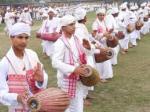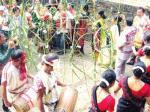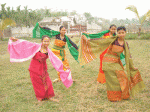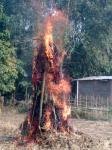|
Assam, a land of diverse cultures, is a kaleidoscope of festivals throughout the year. These celebrations, deeply rooted in the state's rich heritage, offer a glimpse into the vibrant tapestry of Assamese life.
A Symphony of Colors and Traditions
The fusion of various tribal and subtribal traditions has created a unique festive landscape in Assam. Among the most prominent celebrations is Bihu, a three-fold festival that marks significant moments in the agricultural calendar:
Bohag Bihu (Rongali Bihu): Celebrated in April, it heralds the Assamese New Year and the arrival of spring, symbolizing new beginnings and hope.
Magh Bihu (Bhogali Bihu): Held in January, it marks the harvest season and is a time of feasting and merrymaking.
Kati Bihu (Kongali Bihu): Observed in October/November, it signifies the end of the harvest season and is a time for reflection and preparation for the winter months.
A Tapestry of Unity and Diversity
While rooted in diverse faiths and beliefs, Assamese festivals are united by a spirit of togetherness and inclusivity. The celebrations transcend religious boundaries, fostering a sense of community and shared cultural heritage.
Simple Joys and Community Spirit
The simplicity of Assamese people is reflected in their festive traditions. Celebrations often take place in community spaces like Namghars or open fields, where people gather to share joy and gratitude. Bamboo and banana leaves are commonly used for decorations, and the emphasis is on offering nutritious food like sprouted grams and fruits during worship.
|












